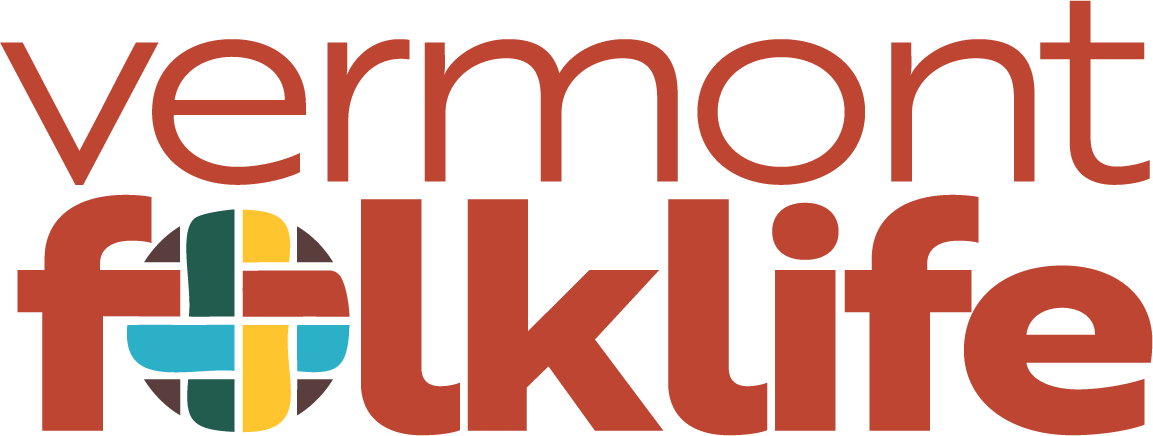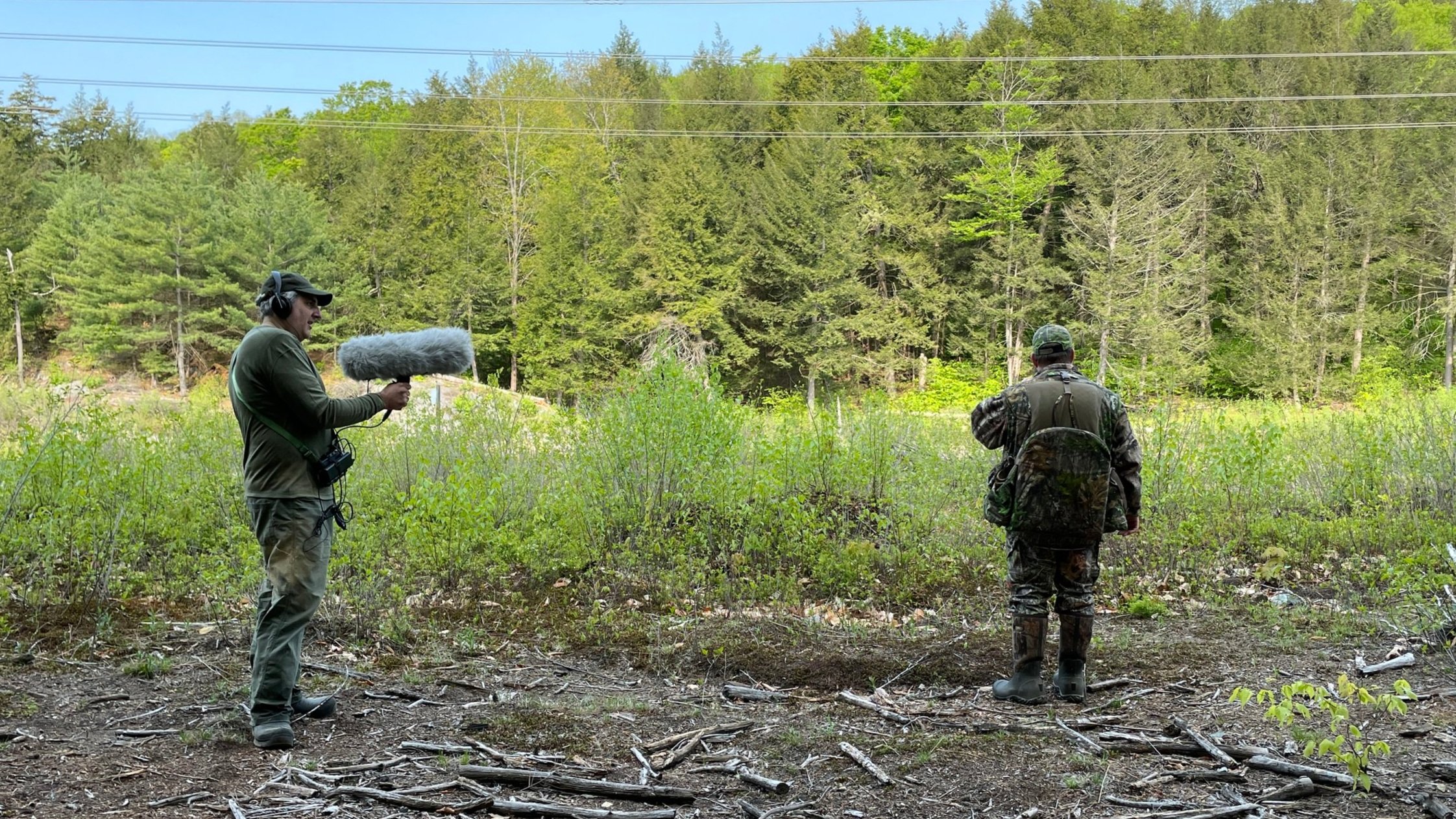Research Update: Turkey Tales
Based on this packing list, can you tell where VT Folklife staffers Andy and Mary were headed very, very, very early one morning this past spring?
Meeting Nicole and Bob pre-dawn in the parking lot at the Putney co-op
Boots: good for hiking, waterproof or resistant
Hiking pants: camo if possible
Warm layers: Avoid cotton and don’t wear red, white, blue, or black
A small camp chair or stadium style seat cushion
Quiet snacks: Nothing in crinkly wrapping, nothing too crunchy
Shotgun microphone and windscreen
Audio recorders and headphones
XLR cables
Wireless lavalier microphone and receiver
Water
Well, they were joining two staff members from the Vermont Fish and Wildlife Department (VFWD), Josh Morse and Nicole Meier, and veteran turkey hunter Bob Etzweiler of Guilford, VT on a spring turkey hunt. Josh carried a digital camera with a long zoom lens, Nicole carried a shotgun, Andy and Mary carried audio recording equipment. Most hunters don’t bring a documentary media crew with them when they head into the woods pre-dawn to find a quiet place to settle in and wait for a flock of turkeys to begin their day. In this case, Mary and Andy were doing ethnographic fieldwork to better understand the experiences of turkey hunters. This collaboration with VFWD was part of an interview project to commemorate the 50th anniversary of the reintroduction of wild turkeys here in Vermont.
Today it’s hard to imagine a Vermont landscape that doesn’t include the occasional flock of wild turkeys. However, as a result of rapid deforestation to create farmable land in the 1800s, the species had largely disappeared from the state by the 1850s. That is until 1968 when the VFWD decided to do something about it. Thanks to their restoration and conservation efforts over the past 50 years, the wild turkey population is alive and well throughout Vermont and the northeast, managed in part through the efforts of local hunters who make sure that their numbers are sustainable in relation to available habitat.
The hunting trip last spring was part of this ongoing research project—although we suspect that not all of the work will involve wearing camo. The hope is to record a range of experiences documenting not only the history of the restoration process, but also to create a snapshot of present-day turkey hunting culture and practice, 50 years later. Most of what we do will be to conduct longform interviews (indoors). Mary and Andy have already spoken with John Hall and Jeffrey Wallin, both wildlife biologists who were involved with the beginnings of the restoration project in the late 60s, as well as a lifelong hunter and a Middlebury College student who shot his first turkey last fall after completing a hunters education course offered during J-term. Interviewing will continue through the end of the year and some of the recorded audio will be “re-released” back to the public as part of a “Listening Party” at the Yankee Sportsman's Classic in January, 2024—an annual sports and outdoors show for outdoors enthusiasts.
Andy records Bob, who is an expert turkey caller


